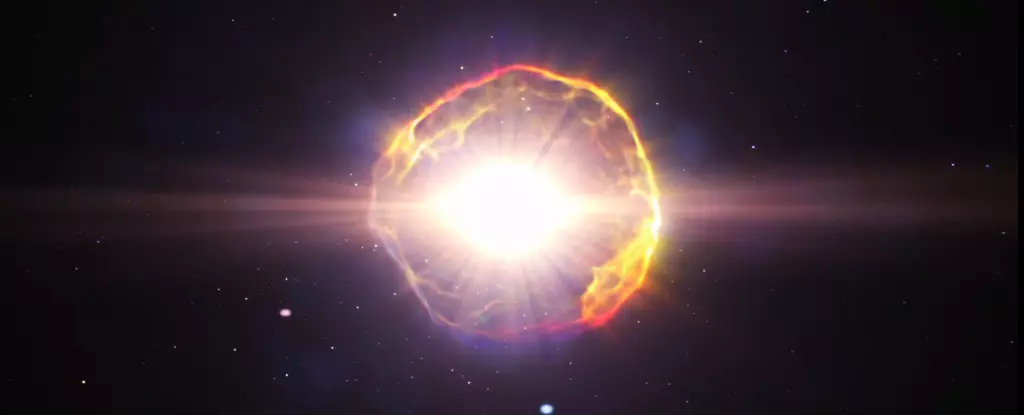Novae are a rare and captivating phenomenon in the world of astronomy. One such nova, T Coronae Borealis (T CrB), is set to make a spectacular appearance in the night sky. While novae are not uncommon in the universe, the predictability and recurrence of T CrB make it a particularly intriguing subject for astronomers.
Unlike regular stars that go through a lifecycle powered by nuclear fusion reactions, T CrB is a white dwarf that has long past its prime. Situated 3,000 light years away, this stellar remnant has a red giant companion. The interaction between these two stars leads to the creation of an accretion disc around the white dwarf. As matter piles up on the dead star, extreme conditions are reached, triggering a runaway thermonuclear reaction that causes T CrB to shine 1,500 times brighter than usual.
Astronomers have been able to pinpoint the eruptions of T CrB with remarkable precision, thanks to the star’s recurrent nature. The most recent eruptions in 1866 and 1946 exhibited similar features, allowing astronomers to anticipate the next eruption. The increase in brightness followed by a fading period are key indicators of an imminent nova event. Amateur astronomers play a vital role in monitoring T CrB and alerting the professional community to its outbursts.
For avid stargazers, the upcoming nova event presents a unique opportunity to witness this celestial spectacle. Located in the constellation of the Northern Crown, T CrB is expected to reach a brightness comparable to the fourth brightest star in the Southern Cross. Observing T CrB around 8:30pm to 9pm local time across Australia and Aotearoa can provide a breathtaking view of this rare event. However, the window of visibility is limited, as the maximum brightness will only last a few hours before fading.
Amateur astronomers around the world are actively engaged in monitoring T CrB and other celestial bodies for signs of eruption. Organizations like the American Association of Variable Star Observing (AAVSO) have amassed a vast database of observations on T CrB. The contributions of amateur astronomers are crucial in filling gaps in night sky observations and enhancing our understanding of recurrent novae.
The upcoming eruption of T Coronae Borealis offers a fascinating glimpse into the dynamic and evolving nature of our universe. By studying and observing rare events like novae, astronomers can unravel the mysteries of the cosmos and expand our knowledge of stellar phenomena. Whether you are a seasoned astronomer or a casual stargazer, don’t miss the chance to witness the awe-inspiring beauty of T CrB’s luminous display in the night sky.


Leave a Reply